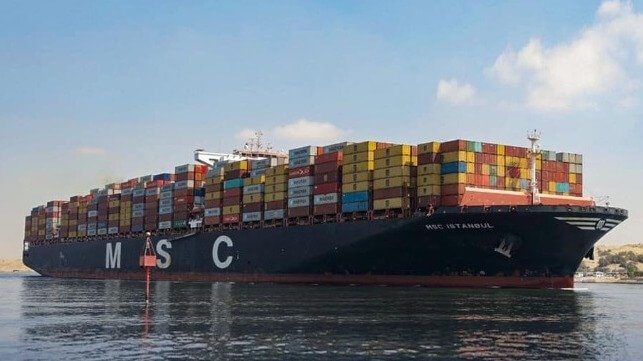New data by UNCTAD shows that 2021 recorded the highest trade growth ever. The positive trend was buoyed by increases in commodity prices, subsiding pandemic restrictions and a strong demand recovery due to economic stimulus efforts.
Overall, the value of global trade reached a record level of about $28.5 trillion in 2021, an increase of about 25 percent relative to 2020 and an increase of about 13 percent relative to the pre-pandemic levels of 2019.
With most of this trade facilitated by the shipping industry, it emerged a top beneficiary. Container shipping raked in a staggering $190 billion in 2021 to become the most profitable sector. Some analyst believe that by the end of 2022, industry sales could soar to a high of $500 billion.
However, international trade growth is forecasted to moderate in 2022. Slower economic growth is expected due to persistent inflation in US and concerns relating to China’s real estate sector, according to an economic growth forecast for 2022 by IMF.
In addition, persistent supply chains disruptions have jolted major companies to realign their supply networks. These efforts to shorten supply chains and to diversify suppliers could affect global trade patterns in 2022.
Companies will accelerate nearshoring initiatives, as they will be focused on improving reliability and managing risks for their supply chain networks. As a result, industrial demand will shift to different ports of entry as supply chain sources expand. For example, Mexico is poised to benefit, as North American manufacturers are likely to bring back production and sourcing into the Americas.
“Encourage more US firms to move businesses they have offshored to China and Southeast Asia closer to home,” Tayde Aburto, the CEO of the United States Business Association for E-Commerce (USBAEC), recently advised the Mexican government.
Indeed, nearshoring offers Mexico a critical opportunity, “which if grabbed in time, it has the potential to help the country reverse years of slow economic growth,” recommends the latest Deloitte Mexico Economic Outlook.
This could also come as a benefit for US East and Gulf Coast Ports, such as Charleston, Savannah and Houston, which are closer to Mexican suppliers.
In the short term, the shipping industry will feel reduced international trade levels through an influx of empty containers. In its latest weekly report, Sea-Intelligence noted that when global supply chains normalize, there would be a challenge dealing with an excess of empties.
“When the supply chain normalizes, this will potentially create a pile of 3.5 million empty containers from the transpacific route alone. This will release a large amount of empty containers, especially in the US. It will cause widespread congestion problems in the second half of 2022 and in 2023, in terminals as well as container depots, unless carriers and container leasing companies start planning for this development already now,” observed Sea- Intelligence.
Currently, approximately 11 percent of the global container fleet is stuck somewhere in the world, either idling on a vessel or waiting to be unloaded, according to estimates by Lars Jensen, the CEO of Vespucci Maritime, a shipping consulting firm.
To cover the gap, container production had to increase. In 2021, more than seven million new 20-foot containers were added to the market, bringing the total available to almost 53 million, according to Drewry.
Reference: https://www.maritime-executive.com/article/after-last-year-s-peak-international-trade-set-to-slow-in-2022

